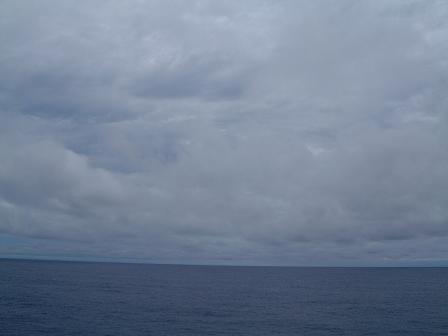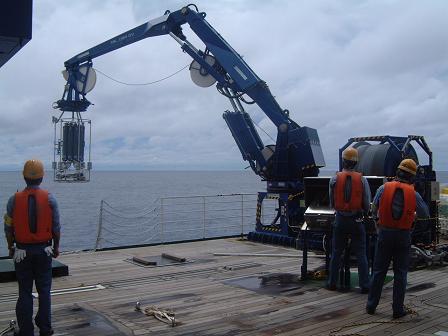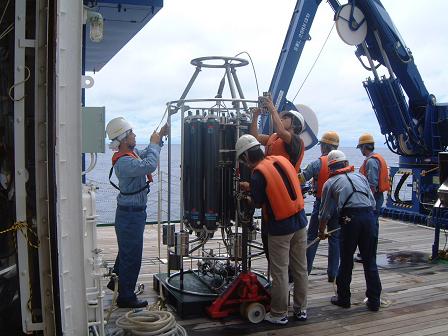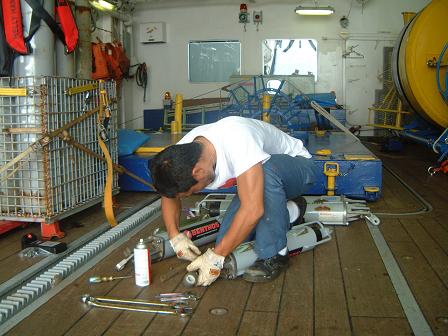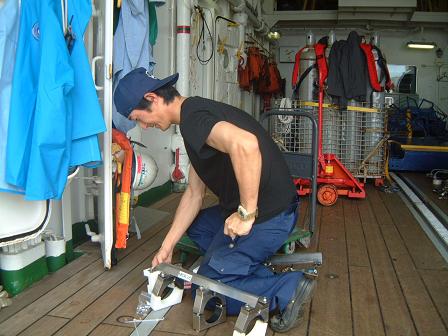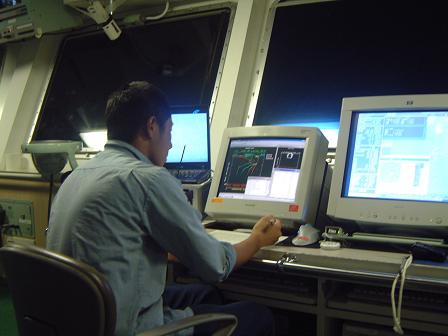♦MISMO Daily Report
|
|
|
Saturday, Nov. 25, 2006
R/V MIRAI
"end of intensive observation"
Heavy precipitation from midnight to the dawn, later cloudy.
Southerly wind (6-8 m/sec) changed to moderate westerly (5 m/sec) in
the daytime. Significant wave height was 1.6 m.
Observations:
Radiosonde at every 3 hours and some coninous observations have been
carried out. CTD casting down to 200m depth was conducted every one
hour for 24-hour period.
Videosondes were launched at 02:54 LST and 06:00 LST.
From the midnight to the early morning, we had heavy precipitation and
its maximum rainfall was recorded at 65 mm / hour (0100-0200 LST).
This rainfall was caused by two cloud systems that were originally
located north and south from the MIRAI and were merged just over the
MIRAI.
Satellite-based cloud images show that the cloud area extends from
tropical western Indian Ocean to central.
Remarks:
After the heavy precipitation, we had calm cloudy morning (photo-1).
While some observations have been finished, 24-hour continuous CTD
casting was carried out to detect the internal wave in the shallow
layers (photos 2, 3).
As we will have only one-night at Maldives for passengers' exchange
and Leg-2 will soon start, marine technician must work hard for the
preparation of Leg-2 observation (photos 4, 5).
By 2345 LST, all CTD observations have been done. (Photo-6 was taken
at the last CTD operation.)
Right now as of 0000 LST 26 November, MIRAI is cruising to Maldives
with 15 knots.
